Climate & Energy
Filters
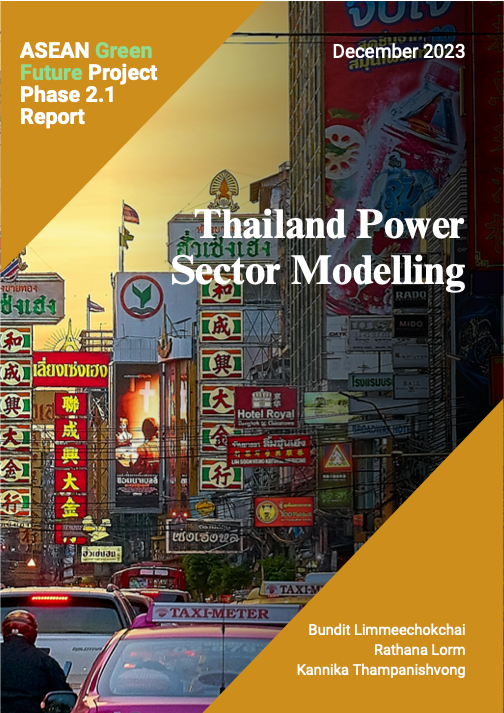
20 Dec, 2023
ASEAN Green Future (AGF) is a multi-year project involving the Sustainable Development Solutions Network, ClimateWorks Centre and research groups in Southeast Asia. The Phase 1 report of each country team presented priorities and actions to date, and key technology and policy opportunities to further advance domestic climate action. Phase 2 uses modelling to quantitatively assess the different decarbonisation pathways for Southeast Asia.
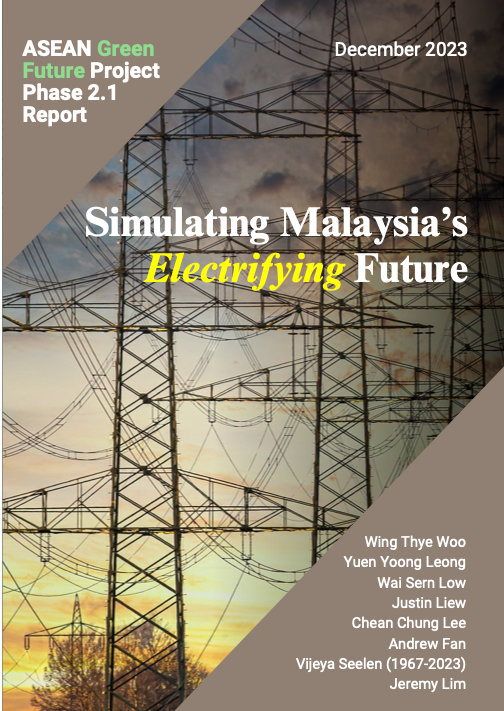
20 Dec, 2023
ASEAN Green Future (AGF) is a multi-year project involving the Sustainable Development Solutions Network, ClimateWorks Centre and research groups in Southeast Asia. The Phase 1 report of each country team presented priorities and actions to date, and key technology and policy opportunities to further advance domestic climate action. Phase 2 uses modelling to quantitatively assess the different decarbonisation pathways for Southeast Asia.
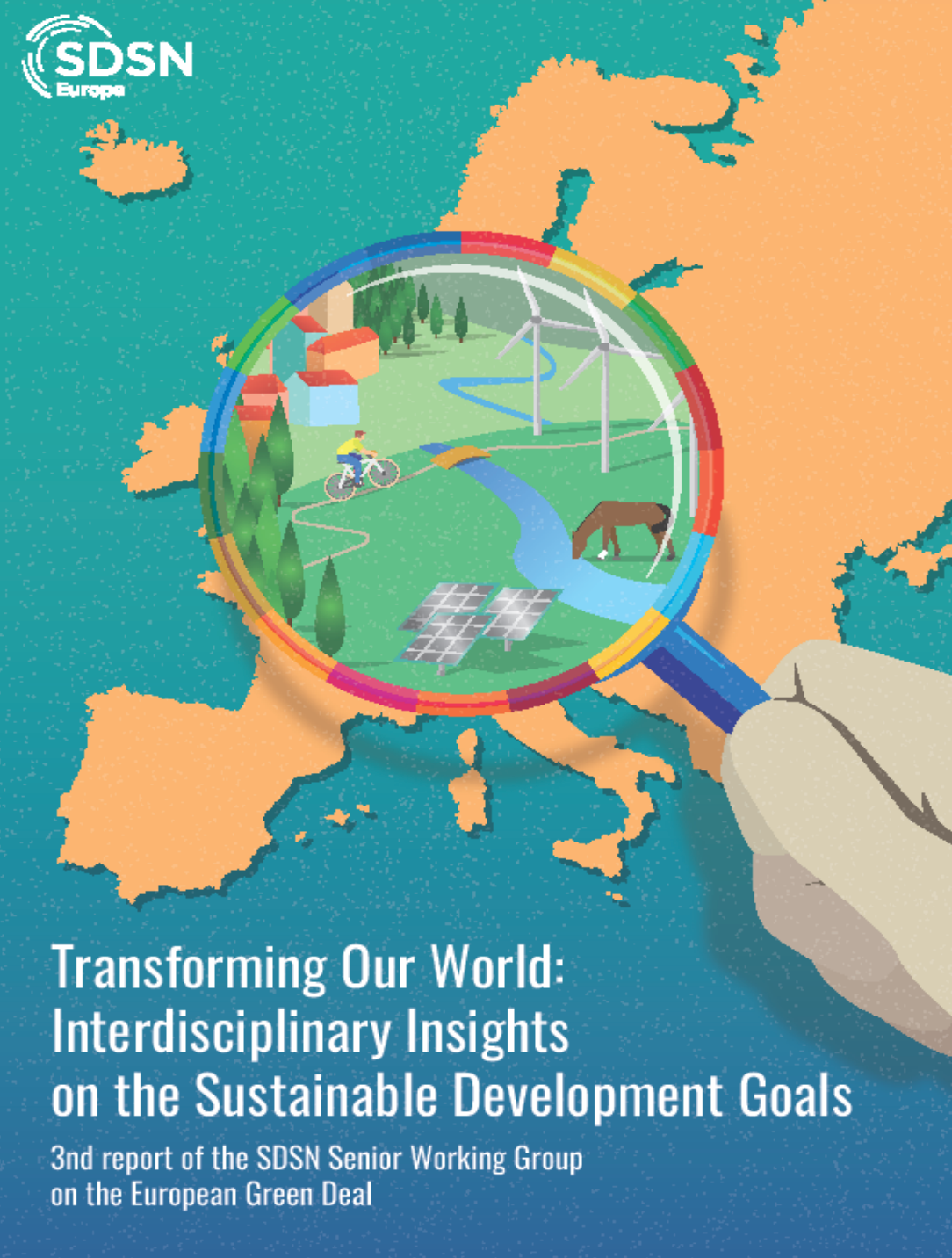
By SDSN
•
27 Jun, 2023
Today's world stands at the crossroads of major global challenges, ranging from poverty and inequality to climate change and environmental degradation. These pressing issues underscore the essential role of sustainable development in forging a prosperous, equitable, and peaceful future for all. Building on the insights and findings of SDSN Senior Working Group on the European Green Deal's previous reports, namely "Transformations for the Joint Implementation of Agenda 2030 for Sustainable Development and the European Green Deal: A Green and Digital, Job-Based and Inclusive Recovery from COVID-19 Pandemic" (2021), and "Financing the Joint Implementation of Agenda 2030 and the European Green Deal" (2022), this year’s report explores in detail the multifaceted nature of sustainable development and offers invaluable insights to guide the policy decisions required to address these challenges. More specifically, in line with the work presented in 2021’s and 2022’s Reports, the current report also investigates the complicated web of factors affecting sustainable development. It emphasizes the importance of region-specific approaches to sustainable development, repeating the focus on the European Union's role presented in the previous reports. It explores the potential of the EU to redefine global sustainable development challenges and highlights the necessity of understanding interdependencies among different systems, a topic touched upon in our discussions about the close link between the European Green Deal and Agenda 2030, with the 17 SDGs. Furthermore, this report expands on the concept of 'natural capital' introduced in 2022’s Report, exploring its interconnectedness with social capital, produced capital, and cultural heritage. More specifically, it recognizes the role of aesthetic, historical, social, and spiritual values in shaping sustainable development policies. In consistence with the previous reports, this report also underscores the significance of green jobs and digital transition as drivers of sustainable development. It goes deeper into the employment trends and skill requirements in the net-zero economy and urges the importance of reskilling policies, reflecting on the job-based recovery discussed in 2021’s Report. Building upon the financial discussion in 2022’s Report, this report touches on the private sector's role in financing the SDGs, identifying SDG content in financial asset portfolios, and emphasizing the potential of carbon farming and voluntary carbon markets. These discussions further illuminate the financial strategies necessary for the successful implementation of sustainable development initiatives. In conclusion, "Transforming Our World: Interdisciplinary Insights on the Sustainable Development Goals" serves as an extension of our previous discussions. By bringing together interdisciplinary insights and understanding the interconnections between different dimensions of sustainable development, this report can guide policymakers and stakeholders to take informed decisions and targeted actions to address the complex challenges of our time, thereby contributing to a more sustainable and equitable future.
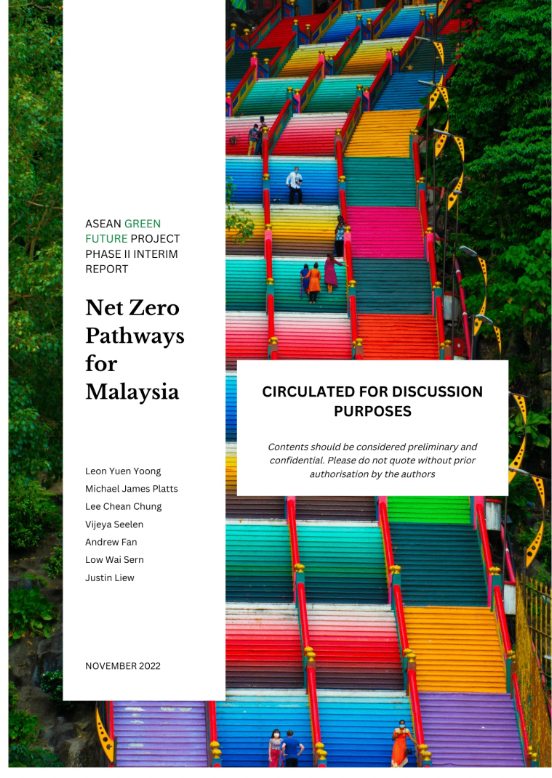
By Info
•
11 Nov, 2022
ASEAN Green Future (AGF) is a multi-year project involving the Sustainable Development Solutions Network, ClimateWorks Centre and research groups in Southeast Asia. AGF started with an online meeting of seven country teams on 23 February 2021. Phase 1 of AGF was completed in in time for presentation COP26 held in November 2021. Phase 1 presented an overview of the current greenhouse gas emissions situation in each country and the climate actions undertaken; and identified the different pathways and technology options to achieve net zero emissions. This interim report on Malaysia presents the main findings of the country team in 2022, after the completion of its Phase 1 report last year.
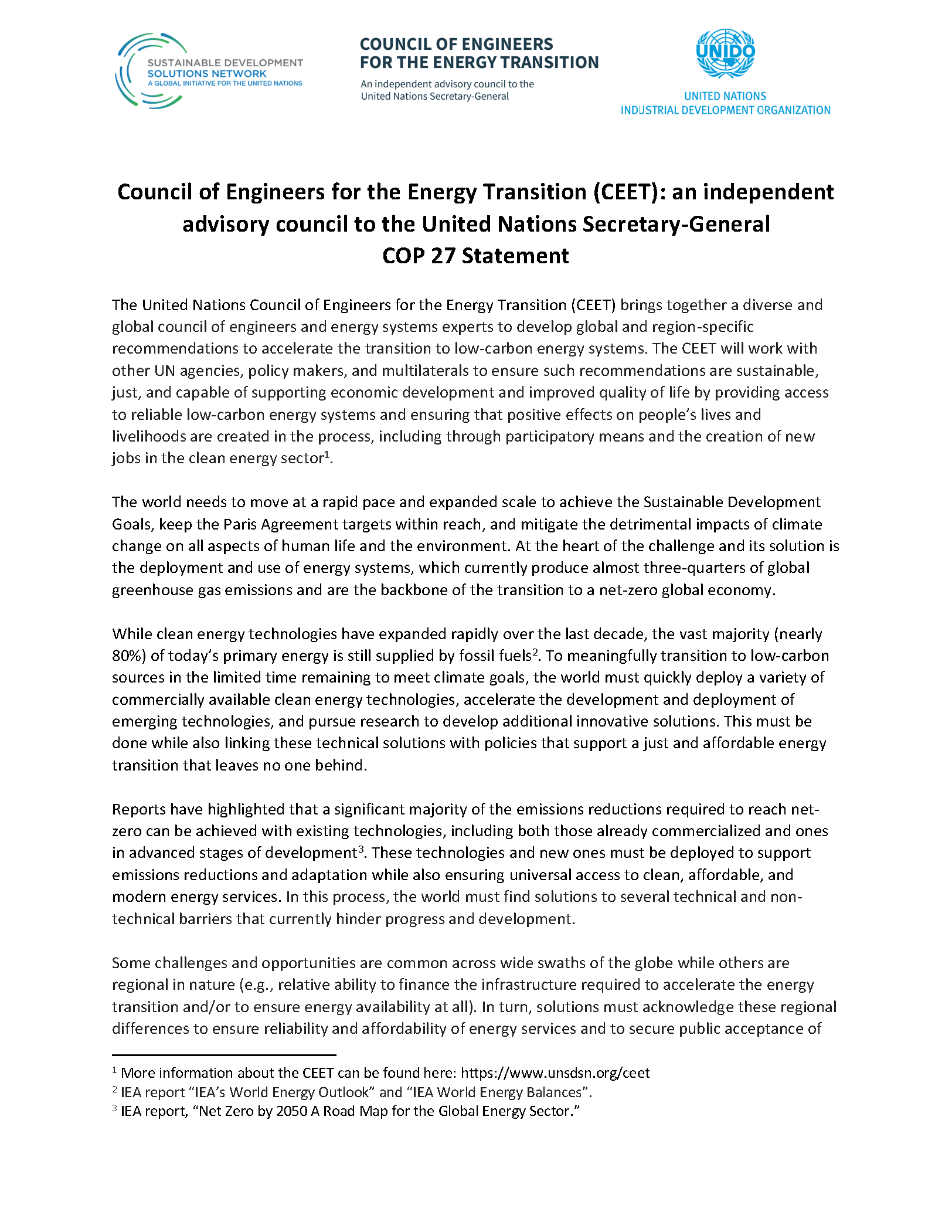
10 Nov, 2022
The Council of Engineers for the Energy Transition (CEET) has released a statement calling for the rapid deployment of commercially available clean energy technologies, for an accelerated development and deployment of emerging technologies, and for research to develop additional innovative solutions.

Life Cycle Assessment (LCA) and Cost-Benefit Analysis for Low Carbon Concrete and Cement Mix Designs
23 Sep, 2022
This white paper, developed by the SDSN and Saoradh Enterprise Partners, evaluates life cycle assessments (LCAs) and cost-benefit analyses for seven low carbon concrete mix designs. Concrete accounts for 8% of global CO2e emissions and is a notoriously hard-to-abate sector. 80% of those emissions come from concrete’s key ingredient, cement, and 50% to 40% are from the calcination of calcium carbonates. These emissions cannot be addressed through renewables, electrification, etc. Reducing cement content through low carbon mix designs is a key solution. This study uses a cost-benefit analysis and life cycle assessments (LCA) to determine which low carbon mix designs reduce CO2e footprints, are profitable to concrete batching plants, and are most advantageous to society. These ready mix, mix designs replace traditional cement with ground granulated blast furnace slag (GGBS), fly ash, biochar, recycled concrete aggregate (RCA), portland-limestone cement, limestone calcined clay cement (LC3), and early stage carbon curing. The LCAs demonstrate that GGBS, LC3, fly ash, and portland-limestone cement reduce the most CO2e emissions: 43%, 37%, 27%, and 9% (respectively). All four are more profitable for batching plants than traditional ready mix concrete by 3% to 21%. Portland-limestone cement, curing, and biochar offer small CO2 reductions, and RCA may increase CO2. These are not more profitable for batching plants, although all mix designs are more advantageous if social carbon costs and waste aversion benefits are considered.
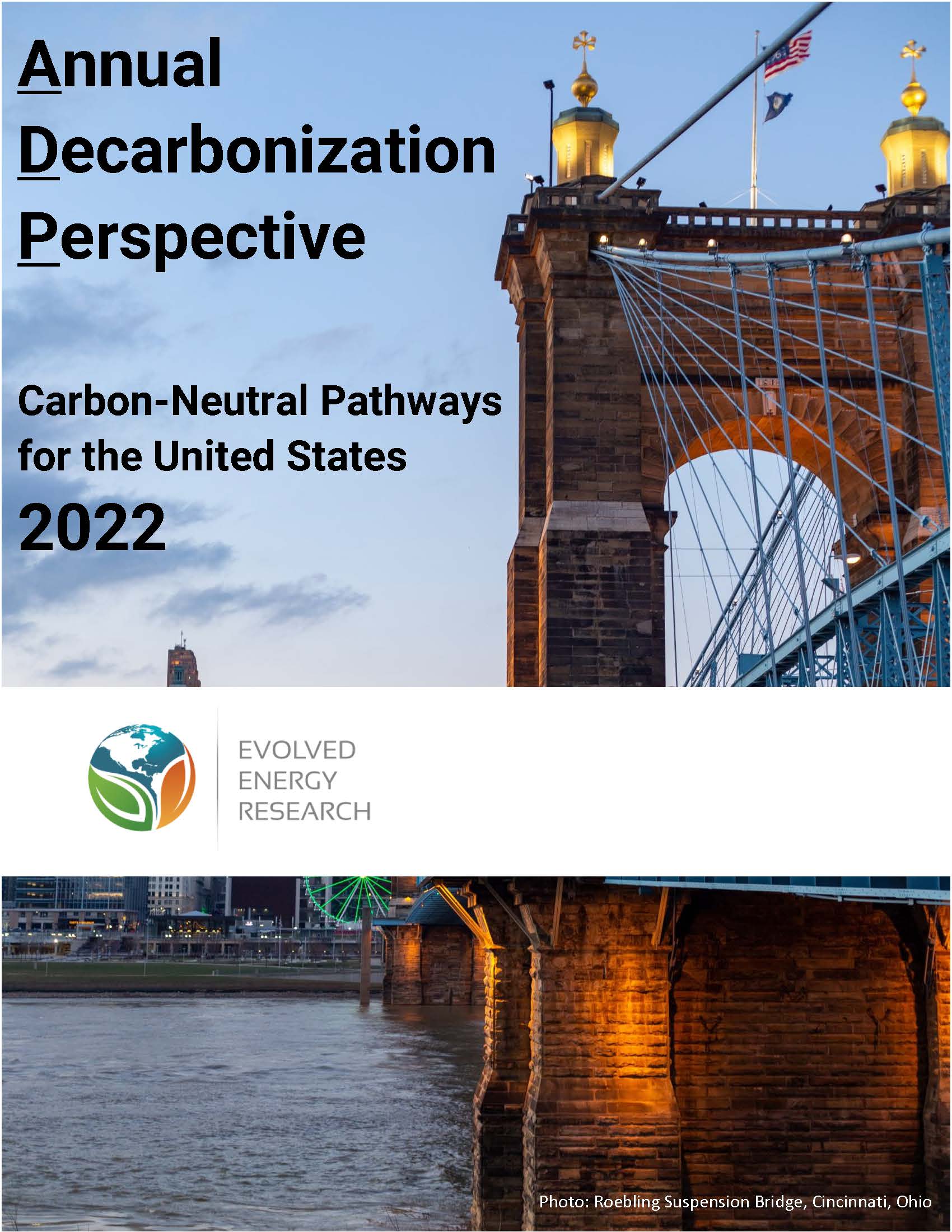
17 Aug, 2022
This report, published by SDSN partner Evolved Energy and DDPP Director Jim Williams, inaugurates a series of annual updates that aim to move pathways analysis in the U.S. beyond isolated proofs-of-concept towards becoming a practical implementation tool for addressing next-stage challenges in energy and climate change mitigation. These are detailed technical blueprints for the transition to a net-zero economy, including the production and use of energy, the land carbon sink, and non-energy greenhouse gas emissions. We used sophisticated, fine-scaled software modeling to map the infrastructure changes, technologies, and costs required to reach carbon neutrality by mid-century along various alternative pathways, while maintaining U.S. economic productivity and a reliable energy system. A growing list of long-term pathways studies in the last few years indicates increasing interest in this type of work. However, a lack of transparency and standardization across these studies renders comparison of results, methods, data sources, and input assumptions difficult. Pathways studies to date are largely a set of one-off snapshots of possible futures, with relatively little coordination between research efforts or continuity over time. In the wake of the newly passed Inflation Reduction Act, which our initial modeling estimates will decrease U.S. greenhouse gas emissions by 40% by 2030, this study charts a course to their complete elimination by mid-century. It analyzes multiple pathways to net-zero and how it can be reached given many potential twists and turns along the way, such as the rise and fall of oil prices, technology breakthroughs or stagnation, and public preferences. The timeline below shows key milestones in a Central scenario that maintains an ambition to reduce emissions by 50%-52% from 2005 levels by 2030 and achieves net-zero emissions by 2050.
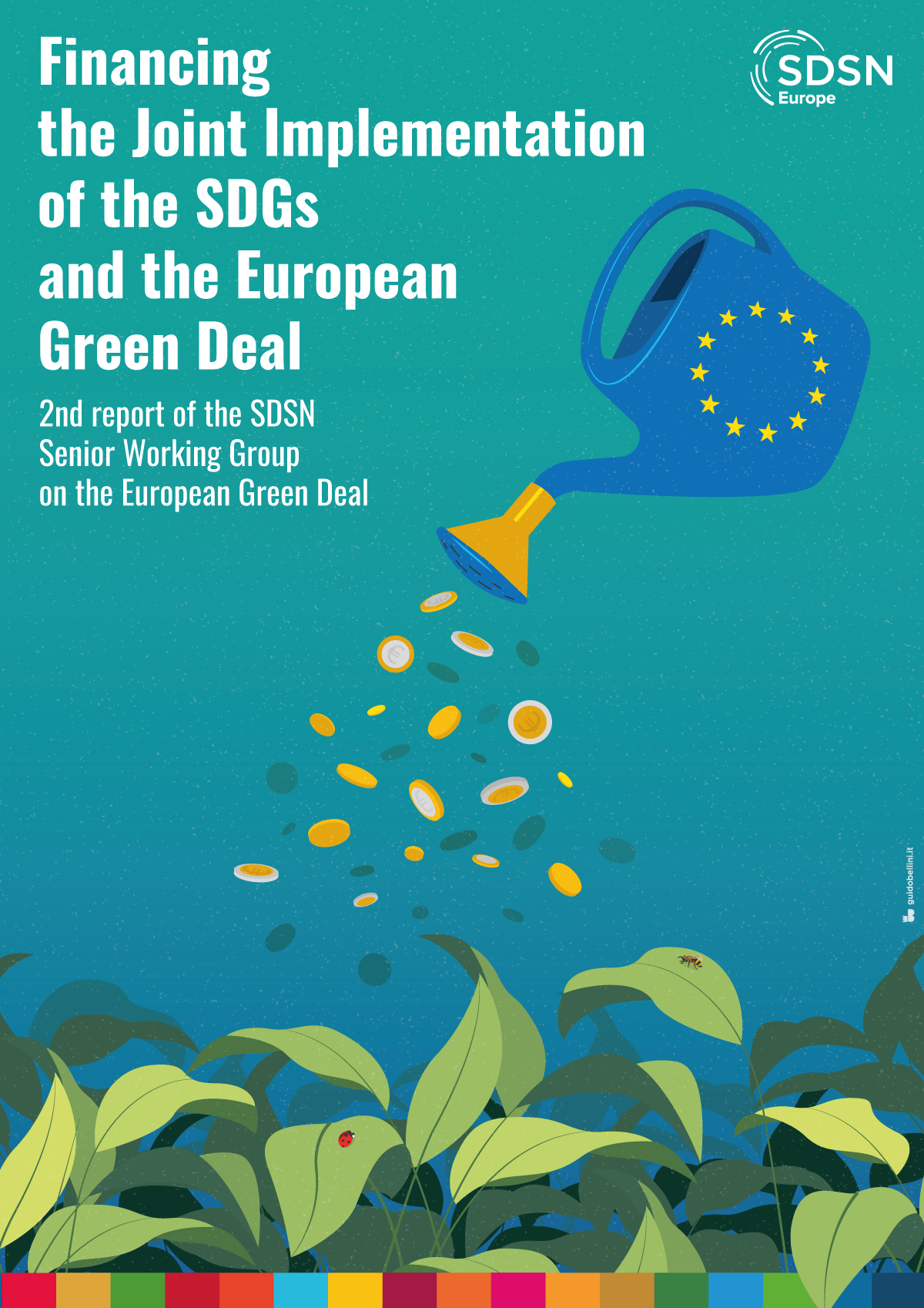
03 May, 2022
Wide-ranging EU policy initiatives of 2020-2021 are tangible examples of the willingness of EU leaders to adopt SDGs as Europe's economic development framework. The substantial alignment of the European Green Deal with SDGs is a clear finding of our report’s analysis. However, even this ambitious framework may fall short of the necessary action to tackle major sustainability challenges. Moreover, since the inancing needs are huge, sustainable finance aspects will be the main topic of further work of this Senior Working Group in the coming years.

By Info
•
02 Nov, 2021
ASEAN Green Future (AGF) is a multi-year project involving the Sustainable Development Solutions Network, ClimateWorks Centre and research groups in Southeast Asia. The Phase 1 report of each country team presents priorities and actions to date, and key technology and policy opportunities to further advance domestic climate action. The Phase 1 regional report situates the region’s path to low-carbon transition within a global context using the country reports and other studies.
SIGN UP FOR SDSN UPDATES
Get our latest insights, opportunities to engage with our networks, and more.
SDSN mobilizes global scientific and technological exertise to promote practical solutions for sustainable development, including the implementation of the Sustainable Development Goals (SGDs) and the Paris Climate Agreement.
Paris
19 rue Bergère
75009 Paris
France
+33 (0) 1 84 86 06 60
New York
475 Riverside Drive
Suite 530
New York NY 10115 USA
+1 (212) 870-3920
Kuala Lumpur
Sunway University
Sunway City Kuala Lumpur
5 Jalan Universiti
Selangor 47500
Malaysia
+60 (3) 7491-8622
Designed by
Northeast Kingdom Online. Powered by
NEKO|360.

